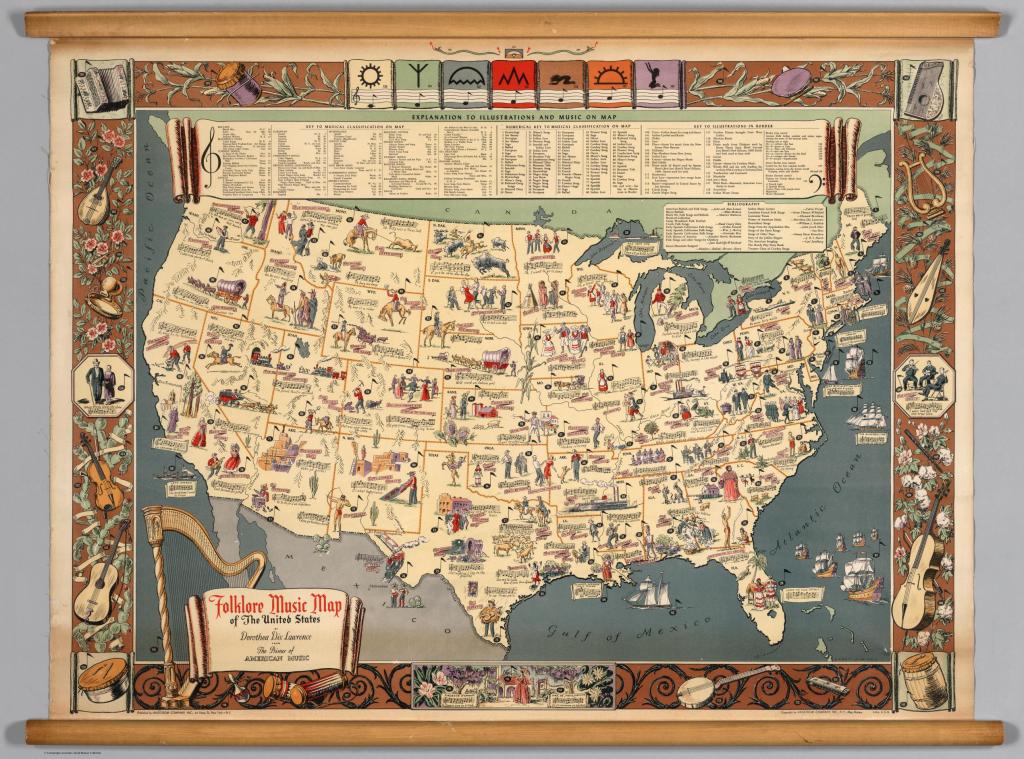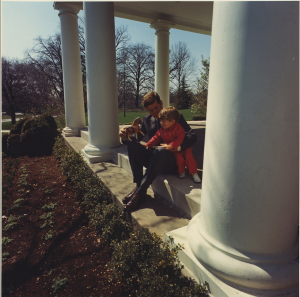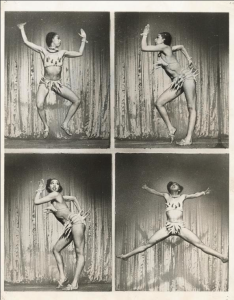DPLA + OpenGLAM = <3
Hi! My name is Kenny Whitebloom, and I’m the newest member of the OpenGLAM Working Group. I’m the Manager of Special Projects at the Digital Public Library of America (DPLA), an online digital library that aggregates and makes freely available metadata and thumbnails for millions of digitized cultural objects from across the United States. My work at DPLA revolves around helping build our network of users and supporters through events, partnerships, strategic initiatives, and other projects that promote growth and innovation. My colleagues and I think through ways in which we can encourage DPLA’s many different audiences to make greater use of our collections and open data, whether that’s through special projects like hackathons or open competitions, partnerships with third-party organizations, or more traditional means like social media or event outreach.

“Folklore Music Map of the United States” 1945. Courtesy of the David Rumsey Historical Map Collection.
Since launching in April 2013, DPLA has aggregated 11 million items from 1,600 institutions located in more than 20 states. We expect to see all three of those numbers grow over the next couple of years, as major new investments from the Alfred P. Sloan Foundation, the Knight Foundation, the Institute of Museum and Library Services, and the National Endowment for the Humanities will allow us to organize new “Service Hubs” – state nodes in our distributed network – in states where currently there isn’t a clear-cut way to contribute materials. As we get closer to completing the map of state-based Hubs, we are focusing more and more on audience engagement and use, among other key work areas.

“President Kennedy plays with son John F. Kennedy, Jr. White House, West Wing Collonade” 1963. Courtesy of the National Archives and Records Administration.
What are teachers and students looking for in something like DPLA? Do they need curated materials for the classroom, or do they prefer unstructured search and browse? How do genealogists think about digital cultural collections, and how we can make DPLA more central to their research? These questions and many more like them are complex and require dedicated research to answer. But if there’s one thing that consistently pops up when we ask users these types of questions – and we’ve done so quite a few times over the past couple of years – it is that the average person wants to be able to use the “stuff” they find online, within the limits of what’s permissible. They want to include an historic image in their school presentation, or hang a replica of an old map of their town in their living room, or make a puzzle out of their favorite vintage advertisement, or even just find a beautiful background for their computer desktop. While a few users are content to simply view an object online, many more want to use the full digital item to enrich their research, work, or leisure.
And the same holds for aggregators like DPLA: we want to be able to celebrate and tell stories to our large and growing network about the wonderful materials that have been brought together in this national platform, whether that’s through social media or virtual exhibitions, primary source sets for educators, or other forms of outreach. While we do our best to draw material from as many of our content partners as possible, we tend to turn to a familiar cast of those who have already opened up their materials for re/use in one form or another. We’re working to educate our community on copyright and the value of open collections so that a greater number feel comfortable sharing their riches more freely, in turn bringing greater attention and traffic to their digital holdings.

“Josephine Baker” ca. 1930-1950. Courtesy of the New York Public Library.
I’m excited to be a part of the OpenGLAM working group because I believe – like OpenGLAM, DPLA, and other similar organizations – that opening up our digitized cultural collections within the limits of copyright encourages new forms of creativity, education, research, and understanding. Openness begets trust, and trust begets stronger cultural bonds. I look forward to working with this community to expand the realm of open materials, and I hope you’ll be in touch with your thoughts and ideas.
Interested in keeping up to date with DPLA? Sign up for their news mailing list.
